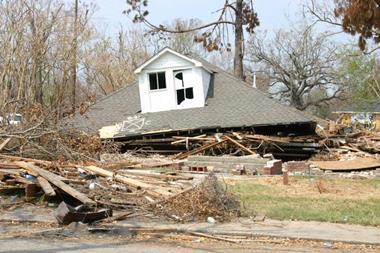The outlook for the global reinsurance sector remains stable supported by robust balance sheets of reinsurers, finds Andrew Holt
The outlook for the global reinsurance sector remains stable, supported by the generally robust balance sheets of reinsurers following strong profits in 2006 and the first half of 2007. This is enhanced by risk management practices, says Moody's Investors Service.
Subject to the level of catastrophe activity, the number of rating actions over the next 12 to 18 months is likely to be moderate and driven more by specific characteristics of individual firms rather than by industry-wide conditions.
Dominic Simpson, a Moody's vice president, says: "Although the reinsurance market is currently in transition as a cycle is under way, there are grounds to believe that the amplitude of the next market downturn could be less pronounced than in the past -- thanks in part to greater transparency and an increased focus on profitability targets and a significant improvement in price monitoring tools, which should aid market discipline."
In addition, reinsurers have been re-evaluating the amount of capital required to run their business and increasingly electing to return capital to shareholders as opposed to deploying it for potentially unprofitable business or retaining it to enhance the capital cushion supporting creditors.
A growing number of reinsurers have introduced or are developing sophisticated stochastic capital models, which Moody's expects will increasingly become integral to the way in which they manage and control their risks and capital.
“"Reinsurance capacity, both traditional and non-traditional, has beenincreasing, significantly helped by the ease with which capital enters and exits the reinsurance industry."
Another notable global business trend has been the growth in alternative funding structures and the new investors they bring to the reinsurance industry. Although the non-life catastrophe-linked securities market (CLS) is likely to decline this year as the sidecar market has come to a pause.
Moody's believes that the CLS market is poised to expand. While Moody's does not expect the likes of cat bonds to seriously threaten the traditional market, alternative structures do pose a disintermediation threat of sorts.
Challenges for the industry include its ability to manage the inherent volatility of catastrophe-related lines. The level of catastrophe activity remains a key cycle driver and the relatively loss-free 2006 and 2007 to date have contributed to property catastrophe prices that are now past their peak.
"Reinsurance capacity, both traditional and non-traditional, has been increasing, significantly helped by the ease with which capital enters and exits the reinsurance industry. Pricing pressure is also being created by business diversification strategies, the benefits of which are clear, but nonetheless carry their own risks, particularly as casualty rates continue to decline," says Simpson.
Hosted by comedian and actor Tom Allen, 34 Gold, 23 Silver and 22 Bronze awards were handed out across an amazing 34 categories recognising brilliance and innovation right across the breadth of UK general insurance.












































No comments yet